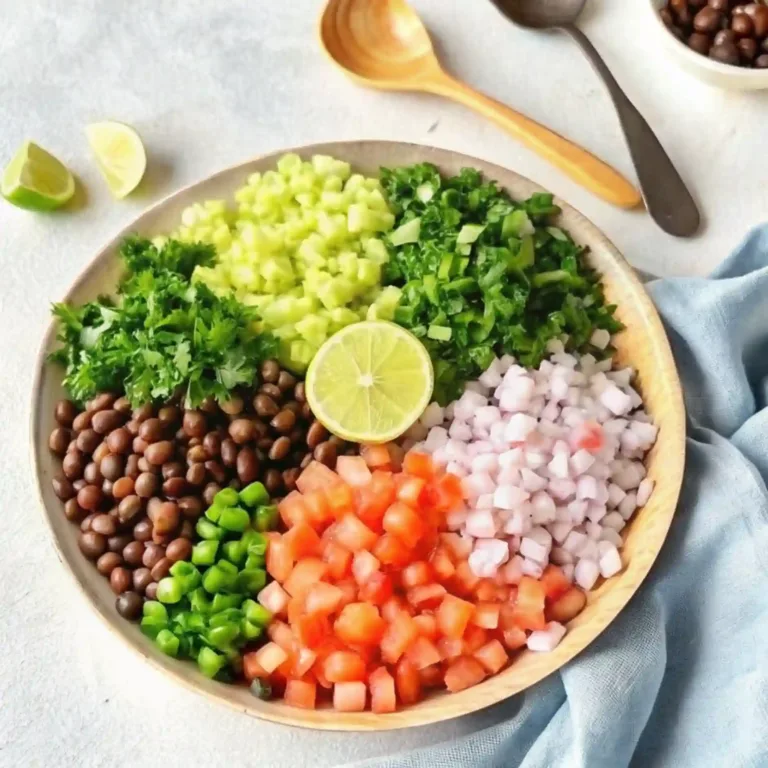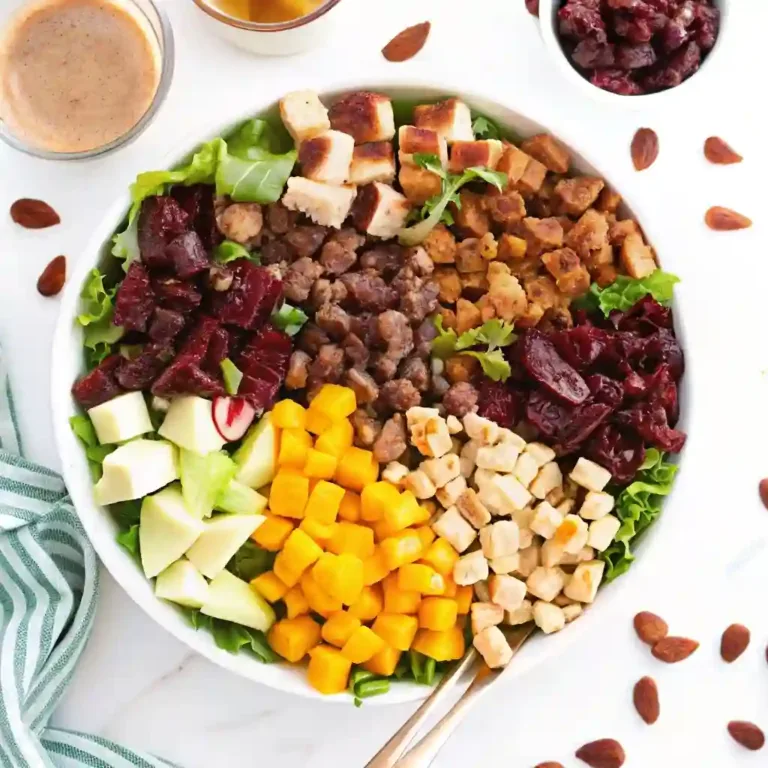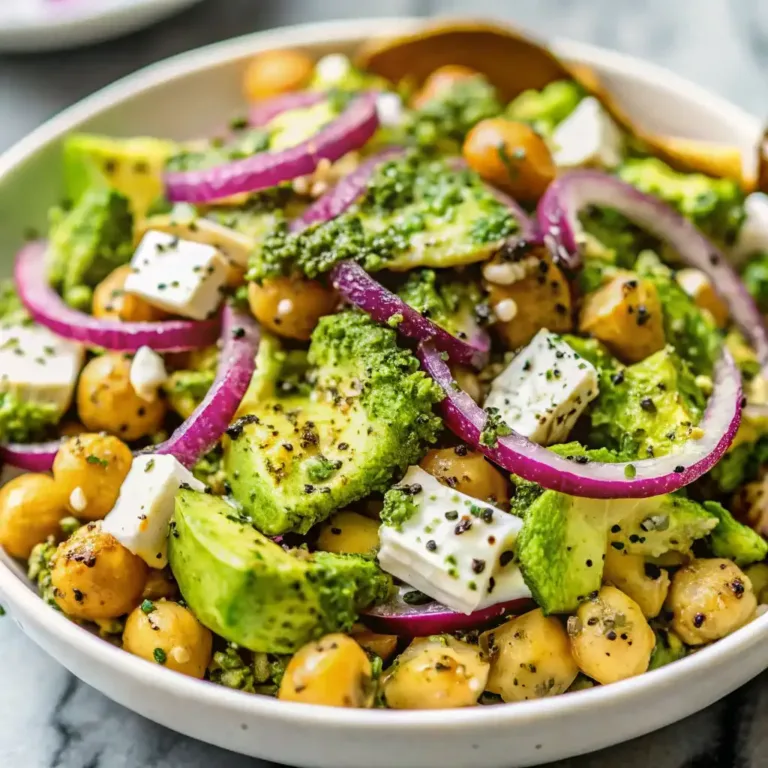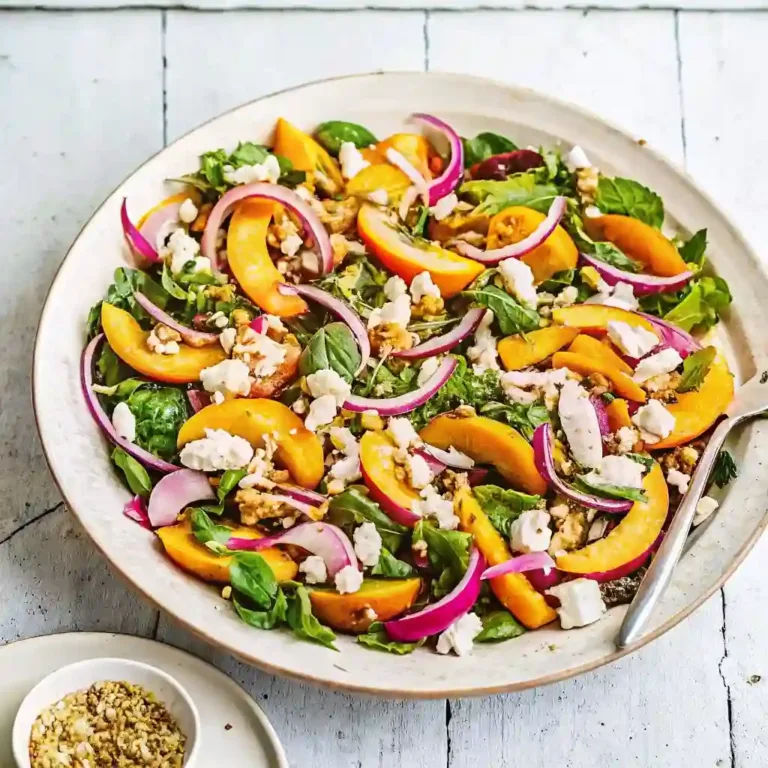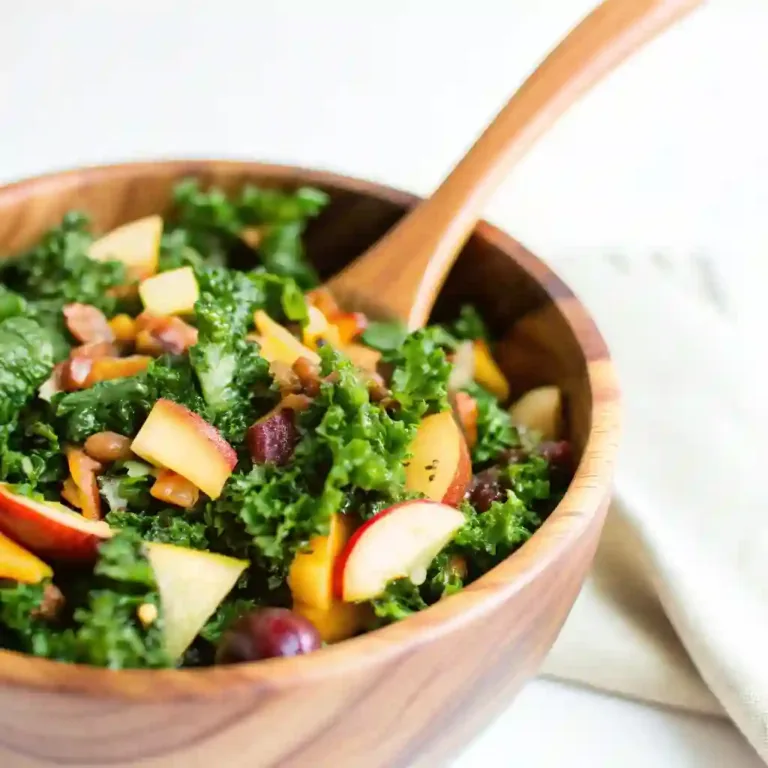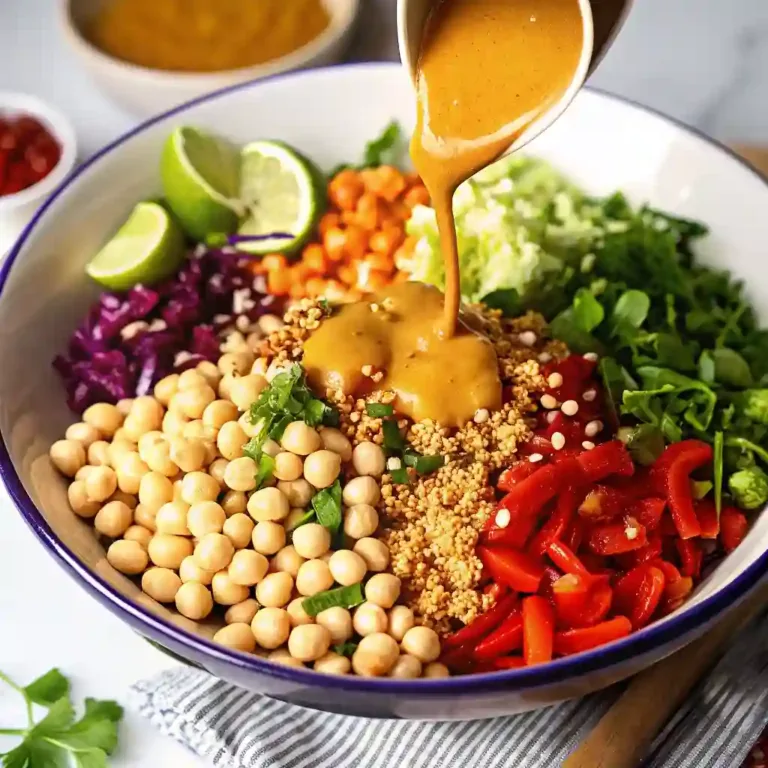Butternut Squash Feta Salad: A Culinary Masterpiece
The Butternut Squash Feta Salad is more than just a dish; it’s an experience. It perfectly encapsulates the essence of fall, blending the sweetness of roasted butternut squash with the salty tang of feta cheese, creating a symphony of flavors that dance on your palate. This versatile salad can be enjoyed as a light lunch, a vibrant side dish, or even a sophisticated appetizer. Whether you’re looking for a healthy and delicious meal or a show-stopping addition to your Thanksgiving table, this recipe is sure to impress. This Thanksgiving Butternut Squash Salad is a delightful alternative to heavier dishes, offering a refreshing and flavorful experience. It’s a perfect way to incorporate seasonal produce and create a memorable culinary moment. This Butternut And Feta Salad is a testament to the power of simple ingredients combined with thoughtful preparation.
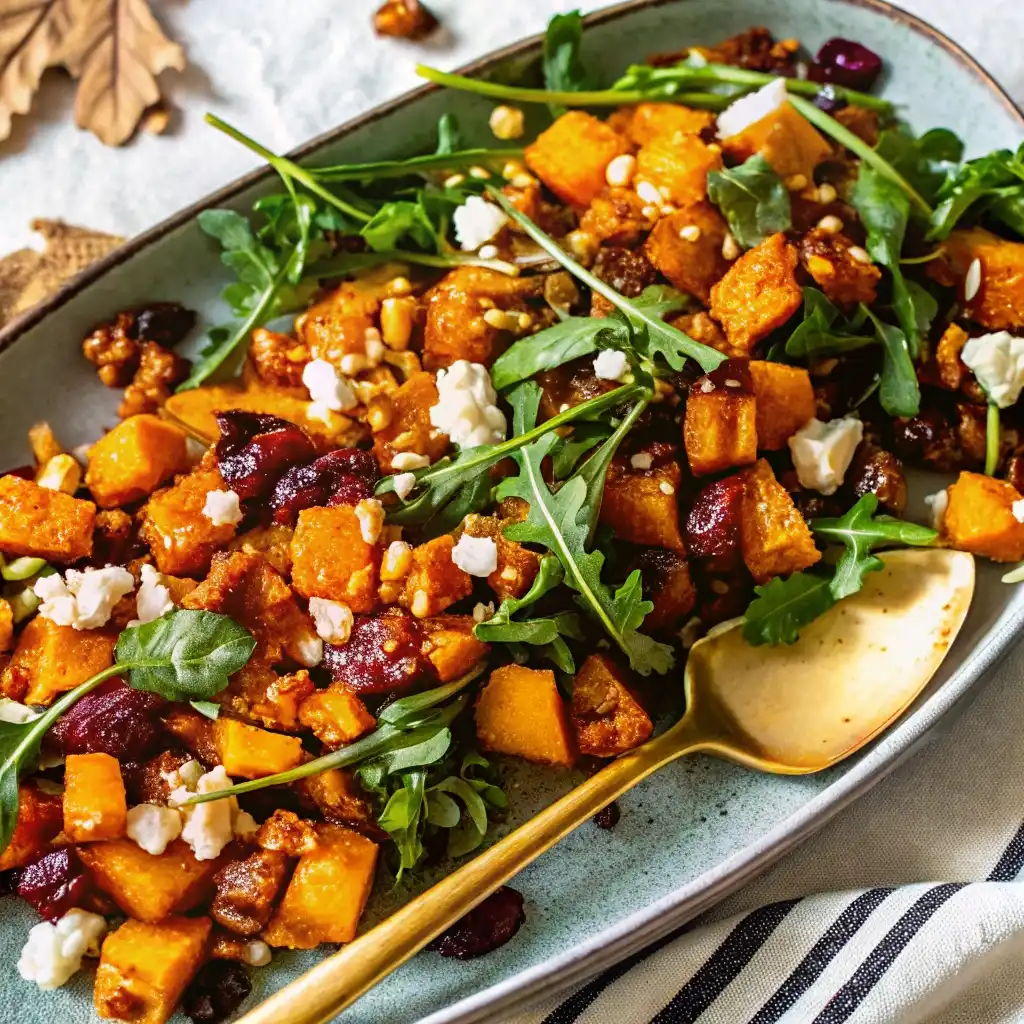
Butternut Squash Feta Salad
Ingredients
Equipment
Method
- Preheat the oven to 400°F (200°C).
- Peel, seed, and cube the butternut squash into 1-inch pieces.
- Toss the cubed squash with 1 tbsp olive oil, salt, and pepper. Spread on a baking sheet.
- Roast for 20–25 minutes, flipping halfway through, until tender and caramelized.
- Toast pecans in a dry skillet over medium heat for 5–7 minutes until fragrant.
- Whisk together 2 tbsp olive oil, maple syrup, apple cider vinegar, Dijon mustard, thyme, salt, and pepper to make the dressing.
- In a large bowl, combine roasted squash, crumbled feta, toasted pecans, cranberries, and arugula (if using).
- Drizzle dressing over the salad and toss gently to combine.
- Serve immediately or chill in the fridge. Enjoy!
Nutrition
Notes
Tried this recipe?
Let us know how it was!Table of Contents
Ingredients List
This section details the precise ingredients needed to create the perfect Butternut Squash Feta Salad, along with their nutritional benefits and potential substitutions.
Detailed description of ingredients and exact quantities
- Butternut Squash: 1 medium-sized butternut squash (approximately 2-2.5 pounds), peeled, seeded, and cubed into 1-inch pieces. The star of the show, butternut squash provides a sweet and nutty base for the salad.
- Feta Cheese: 4 ounces, crumbled. Use a high-quality feta cheese for the best flavor and texture. Sheep’s milk feta is often preferred for its creaminess and tangy flavor.
- Olive Oil: 3 tablespoons, extra virgin. Olive oil is essential for roasting the squash and creating a flavorful dressing.
- Maple Syrup: 2 tablespoons, pure maple syrup. Adds a touch of sweetness to complement the savory elements.
- Apple Cider Vinegar: 2 tablespoons. Provides a tangy counterpoint to the sweetness of the squash and maple syrup.
- Dijon Mustard: 1 teaspoon. Emulsifies the dressing and adds a subtle depth of flavor.
- Fresh Thyme: 1 tablespoon, chopped. Fresh thyme adds an earthy and aromatic note to the salad. Rosemary can also be used.
- Pecans: 1/2 cup, toasted and chopped. Adds a crunchy texture and nutty flavor. Walnuts or pumpkin seeds are good substitutes.
- Dried Cranberries: 1/4 cup. Adds a chewy texture and tart sweetness. Raisins or dried cherries can be used instead.
- Salt and Black Pepper: To taste. Essential for seasoning and enhancing the flavors of the other ingredients.
- Arugula (Optional): 5 ounces, baby arugula. Adds a peppery and slightly bitter note to the salad. Spinach or mixed greens can be substituted.
Nutritional benefits of key ingredients
- Butternut Squash: Rich in vitamins A and C, as well as fiber and potassium. Vitamin A is crucial for vision and immune function, while vitamin C is a powerful antioxidant. Fiber aids in digestion and promotes satiety, and potassium helps regulate blood pressure.
- Feta Cheese: A good source of calcium and protein. Calcium is essential for bone health, and protein is vital for building and repairing tissues. Feta also contains probiotics, which can support gut health.
- Olive Oil: Contains healthy monounsaturated fats, which are beneficial for heart health. It also contains antioxidants that can protect against cell damage.
- Pecans: Rich in antioxidants, healthy fats, and fiber. Antioxidants help protect against cell damage, healthy fats support heart health, and fiber aids in digestion.
Healthy or alternative ingredient options
- Maple Syrup: For a lower-sugar option, use a sugar-free maple syrup alternative or a small amount of honey.
- Feta Cheese: For a dairy-free option, use a vegan feta cheese alternative made from nuts or tofu. You can also omit the feta altogether and add a sprinkle of nutritional yeast for a cheesy flavor.
- Pecans: Walnuts, pumpkin seeds, or sunflower seeds can be used as a substitute for pecans. These alternatives provide similar nutritional benefits and textures.
- Olive Oil: Avocado oil or coconut oil can be used as a substitute for olive oil. These oils have different flavor profiles, so adjust the seasoning accordingly.
- Arugula: Spinach or mixed greens can be used as a substitute for arugula. These alternatives provide similar nutritional benefits and a milder flavor.
This Paleo Butternut Squash Salad can be easily achieved by ensuring the feta cheese is from grass-fed sheep and using a paleo-friendly sweetener if desired. The naturally sweet squash and other whole ingredients make it a healthy and satisfying option.
Preparation Instructions
This section provides a detailed, step-by-step guide to preparing the Butternut Squash Feta Salad, ensuring a perfect outcome every time.
Pre-preparation guidelines
- Preheat the oven: Preheat your oven to 400°F (200°C). This ensures the butternut squash roasts evenly and develops a caramelized exterior.
- Prepare the butternut squash: Peel, seed, and cube the butternut squash into 1-inch pieces. Uniformly sized pieces will cook at the same rate.
- Toast the pecans: Toast the pecans in a dry skillet over medium heat for 5-7 minutes, or until fragrant and lightly browned. This enhances their flavor and texture. Alternatively, toast them in the oven for 8-10 minutes.
- Prepare the dressing: In a small bowl, whisk together the olive oil, maple syrup, apple cider vinegar, Dijon mustard, thyme, salt, and pepper. Taste and adjust seasonings as needed.
Step-by-step cooking process
- Roast the butternut squash: Toss the cubed butternut squash with 1 tablespoon of olive oil, salt, and pepper. Spread the squash in a single layer on a baking sheet. Roast for 20-25 minutes, or until tender and slightly caramelized, flipping halfway through.
- Assemble the salad: In a large bowl, combine the roasted butternut squash, feta cheese, toasted pecans, dried cranberries, and arugula (if using).
- Dress the salad: Pour the dressing over the salad and toss gently to combine. Be careful not to overdress the salad, as this can make it soggy.
- Serve immediately: Serve the salad immediately or chill for later. The salad can be stored in the refrigerator for up to 3 days.
Tips for avoiding common errors and enhancing flavor
- Don’t overcrowd the baking sheet: Overcrowding the baking sheet will steam the squash instead of roasting it. Use two baking sheets if necessary.
- Use high-quality ingredients: The quality of the ingredients will directly impact the flavor of the salad. Use fresh, high-quality butternut squash, feta cheese, and olive oil.
- Adjust the sweetness to your liking: If you prefer a less sweet salad, reduce the amount of maple syrup. You can also add a pinch of red pepper flakes for a touch of heat.
- Add other vegetables: Consider adding other roasted vegetables to the salad, such as Brussels sprouts, sweet potatoes, or carrots. This will add more flavor and texture.
- **Make it a *Warm Butternut Squash Salad*: Serve the salad immediately after roasting the squash for a warm and comforting dish.
Serving Suggestions & Nutritional Info
This section provides ideas for serving and presenting the Butternut Squash Feta Salad, along with nutritional information and suitable pairings.
Innovative plating and presentation ideas
- Individual servings: Serve the salad in individual bowls or on small plates for an elegant presentation.
- Layered salad: Layer the ingredients in a glass bowl or jar for a visually appealing presentation.
- Garnish with fresh herbs: Garnish the salad with fresh thyme sprigs or parsley for a pop of color and aroma.
- Add a drizzle of balsamic glaze: A drizzle of balsamic glaze adds a touch of sweetness and acidity.
- Serve on a bed of greens: Serve the salad on a bed of mixed greens or spinach for a more substantial meal.
Suitable side dishes and pairings
- Grilled chicken or fish: The salad pairs well with grilled chicken or fish for a complete and balanced meal.
- Roasted vegetables: Serve the salad alongside other roasted vegetables, such as Brussels sprouts or sweet potatoes.
- Quinoa or couscous: Add quinoa or couscous to the salad for a heartier and more filling meal.
- Soup: Serve the salad as a side dish to a warm bowl of soup, such as butternut squash soup or tomato soup.
- Bread: Serve the salad with crusty bread or baguette for dipping in the dressing.
This Savory Butternut Squash Thanksgiving Salad is a great addition to any Thanksgiving feast. Its bright flavors and textures provide a welcome contrast to the richer, heavier dishes typically served.
Nutritional facts and health benefits
(Approximate values per serving, based on a recipe serving 6):
- Calories: 250-300
- Fat: 15-20g
- Saturated Fat: 5-7g
- Cholesterol: 20-30mg
- Sodium: 200-300mg
- Carbohydrates: 25-30g
- Fiber: 4-6g
- Sugar: 10-15g
- Protein: 5-7g
This Butternut Squash Salad With Feta Cheese is a healthy and delicious option, packed with vitamins, minerals, and antioxidants. It’s a great way to incorporate seasonal produce into your diet and enjoy a flavorful and satisfying meal. These Healthy Fall Salads are a great way to enjoy the season’s bounty while maintaining a balanced diet.
Frequently Asked Questions
- Can I make this salad ahead of time?
Yes, you can roast the butternut squash and prepare the dressing ahead of time. Store them separately in the refrigerator and combine them just before serving. - How long does this salad last in the refrigerator?
The salad can be stored in the refrigerator for up to 3 days. However, the arugula may wilt slightly over time. - Can I use frozen butternut squash?
Yes, you can use frozen butternut squash. Thaw it completely before roasting. - Can I add other ingredients to this salad?
Yes, you can add other ingredients to this salad, such as roasted Brussels sprouts, sweet potatoes, or cranberries. - Is this salad gluten-free?
Yes, this salad is naturally gluten-free. - Can I make this salad vegan?
Yes, you can make this salad vegan by using a vegan feta cheese alternative or omitting the feta altogether. - What is the best way to toast pecans?
The best way to toast pecans is in a dry skillet over medium heat for 5-7 minutes, or until fragrant and lightly browned. You can also toast them in the oven for 8-10 minutes at 350°F (175°C).
Conclusion
The Butternut Squash Feta Salad is a culinary gem that seamlessly blends sweet, savory, and tangy flavors into a harmonious and delightful experience. Its versatility allows it to be enjoyed as a light lunch, a vibrant side dish, or a sophisticated appetizer, making it perfect for any occasion. With its simple yet elegant preparation, this recipe is accessible to cooks of all skill levels. So, gather your ingredients, follow the steps, and prepare to be amazed by the explosion of flavors that this salad offers. Embrace the essence of fall and elevate your dining experience with this exceptional Butternut Squash Feta Salad. Give it a try – you won’t be disappointed!

